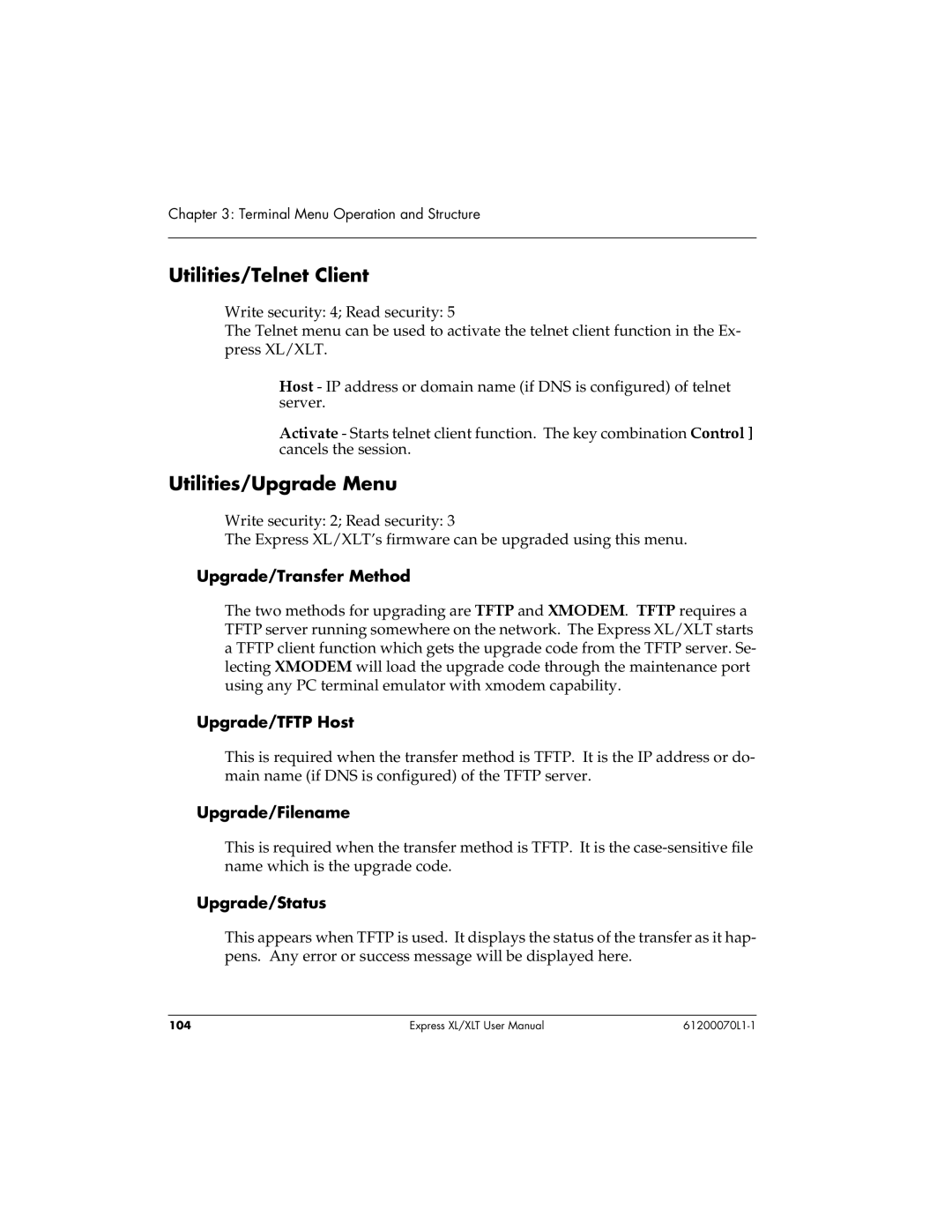Express XLT, Express XL specifications
ADTRAN has established itself as a leading provider of telecommunications solutions, and among its impressive lineup, the ADTRAN Express XL and Express XLT stand out as robust offerings designed for the evolving demands of modern networks. These devices cater to service providers and enterprises looking to enhance their broadband delivery capabilities while ensuring cost-efficiency and reliability.The ADTRAN Express XL is a high-capacity, next-generation fiber optic access platform. It is engineered to support a wide array of technologies, including Passive Optical Network (PON) standards such as GPON and XGSPON. The Express XL's architecture allows for seamless scalability, making it a perfect fit for both small-scale deployments and expansive network rollouts. What sets it apart is its ability to deliver ultra-fast broadband services to residential, business, and mobile backhaul customers with its impressive throughput capabilities.
On the other hand, the Express XLT builds upon the success of the Express XL by incorporating advanced features aimed at maximizing operational efficiency. It supports technologies including Active Ethernet and offers flexible network configurations to meet specific service requirements. Both models utilize ADTRAN’s innovative Dynamic Bandwidth Allocation technology, which dynamically allocates bandwidth to users based on real-time demand, ensuring optimal performance and user satisfaction.
A key characteristic of both ADTRAN Express XL and XLT is their energy efficiency. Designed to minimize operational costs, these units use power-saving technologies that reduce energy consumption without compromising performance. Furthermore, they include built-in support for network functions virtualization (NFV) and software-defined networking (SDN), providing operators with the agility to adapt their networks in response to changing market conditions.
In addition to their advanced technological underpinnings, the Express XL and XLT boast an intuitive management interface, simplifying network monitoring and management tasks. They also feature comprehensive telemetry and analytics capabilities that help operators gain insights into network performance, optimize configurations, and troubleshoot potential issues before they affect end users.
Ultimately, the ADTRAN Express XL and Express XLT are pivotal components for service providers aiming to deliver high-speed broadband services effectively. With their blend of flexibility, scalability, and energy efficiency, these access platforms are well-positioned to meet the current and future demands of telecommunications networks worldwide.

